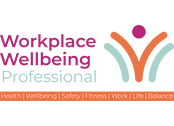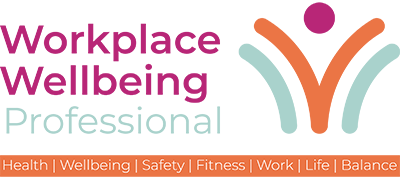Drink and drug use during work hours is far more common than employers may realise, with more than a third of employees admitting to engaging in or witnessing addictive behaviours while on the job.
That’s the warning from new research that reveals a hidden emergency playing out behind office doors and on factory floors. A survey conducted by healthcare provider Bupa found that 34% of employees had either used or seen others using substances or engaging in addictive behaviours during working hours.
More than half of UK workers (57%) confessed to struggling with some form of addiction. Alcohol (15%), gambling (14%) and recreational drug use (7%) were among the most cited, although many also pointed to less visible compulsions such as social media, prescription medication and cryptocurrency trading.
The findings come against a backdrop of rising national treatment figures, with more than 310,000 adults in contact with drug and alcohol services between April 2023 and March 2024. That’s a 7% increase on the previous year and the highest number recorded since 2009.
Workplace Culture Plays a Major Role
For many, the job itself is part of the problem. Nearly half (48%) of those surveyed said they turned to addictive behaviours to cope with stress at work, while 46% blamed high-pressure environments and 40% cited workplace culture as a contributing factor.
Dom McGregor, co-founder of marketing firm Social Chain and author of I’m Never Drinking Again, said the professional setting could often enable, rather than deter, addiction.
“Coping with addiction in the workplace can be really difficult and there’s certainly a stigma around admitting you’re struggling and seeking help,” he said.

“Work drinks, networking events and team-building exercises are often centred around getting drunk together, and this kind of culture can really expedite addiction problems.” This was something I experienced myself.”
Speaking from personal experience, McGregor said he was building a company in his early 20s and found that he had become “trapped in a cycle of alcohol dependency”.
Drinking, at work-related events, “wasn’t just accepted,” he said, “it was expected.”
And it “masked anxiety, burnout and imposter syndrome, and it became the tool I used to keep up the facade of success. I was on a journey of self-sabotage, destroying myself, my career, my life, my relationships, for alcohol. At 22 years old, you don’t think that alcohol is a problem because it’s so ingrained in society. It’s a very normalised thing for people to do, to go out and get drunk.”
For McGregor, the turning point came when a close friend “had the courage” to tell him he had a problem with alcohol and that he should quit drinking.
“That moment was a catalyst,” he said. “Over the last few years, cultures have definitely changed. There is more understanding around addiction and the impact this can have.”
He added that companies “now place much more focus on fostering a healthy workforce, and conversations around mental health and substance misuse are finally breaking through the stigma.”
Hidden Epidemic, Silent Suffering
Despite the scale of the problem, many employees still suffer in silence. The research found that 45% would rather hide an addiction than discuss it at work, and 43% have avoided seeking medical or professional help for fear of workplace consequences.
A similar number of employers (49%) said they had noticed an increase in addiction-related issues among their workforce in the past year, with tangible impacts on performance (44%) and absenteeism (33%). Business leaders pointed to personal difficulties (42%) and mental health challenges (42%) as key drivers of addiction in their teams.
Dr Robin Clark, medical director at Bupa UK Insurance, said addiction remained a taboo topic at work but one that organisations could no longer afford to ignore. He said it was “often due to the stigma, lack of understanding and the fear of repercussions at work. However, both employees and employers see the impact addiction has on the individual and on the business as a whole”.
Bupa figures show that in the past five years, more than 26,000 claims were made for various addictions, Clark said, adding that it “shows how prevalent the issue is”.
He added that “[w]hile businesses acknowledge the growing scale of the issue, it’s important they create a culture where people can feel supported and comfortable opening up about what they’re going through and have access to confidential services to help them get treatment when they need it. If they don’t, they run the risk of not being able to retain valuable talent.”
Creating a Supportive Workplace Culture
The scale of the problem is troubling, say experts, but there are tangible steps employers can take to support workers dealing with addiction and reduce the risk of substance misuse taking hold in the first place.
- Break the stigma through open dialogue
Encouraging honest, judgement-free conversations around addiction is the first step to removing the fear that stops employees from seeking help. Line managers need training to recognise signs of addiction and respond with compassion rather than punishment. - Review workplace culture and routines
Drinking culture still dominates many workplaces, particularly in social and client-facing industries. Reviewing how teams bond, celebrate and network — and offering inclusive, alcohol-free alternatives — can make a meaningful difference. - Provide easy, confidential access to support
Bupa’s research highlights how lack of access and fear of repercussions keep many from reaching out. Mental health benefits that include direct, confidential access to addiction specialists, without the need for a GP referral, can remove key barriers to treatment. - Develop clear policies that protect, not punish
Employers should ensure their policies are rooted in rehabilitation, not retribution. Clear guidance around addiction, time off for treatment and support pathways can empower workers to come forward without fear of dismissal. - Monitor and measure change
Tracking trends in absence, performance, and employee feedback can help identify early signs of widespread issues. Pulse surveys, HR data and engagement metrics all have a role to play in proactively managing wellbeing at work.


